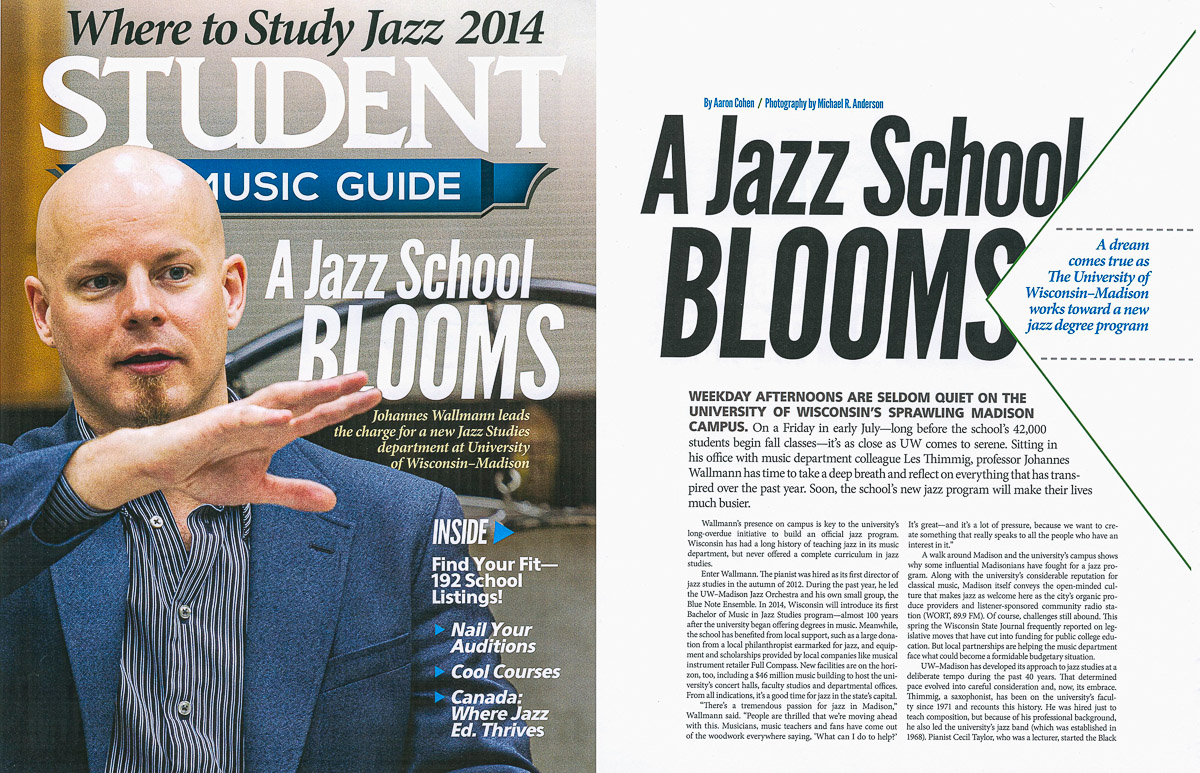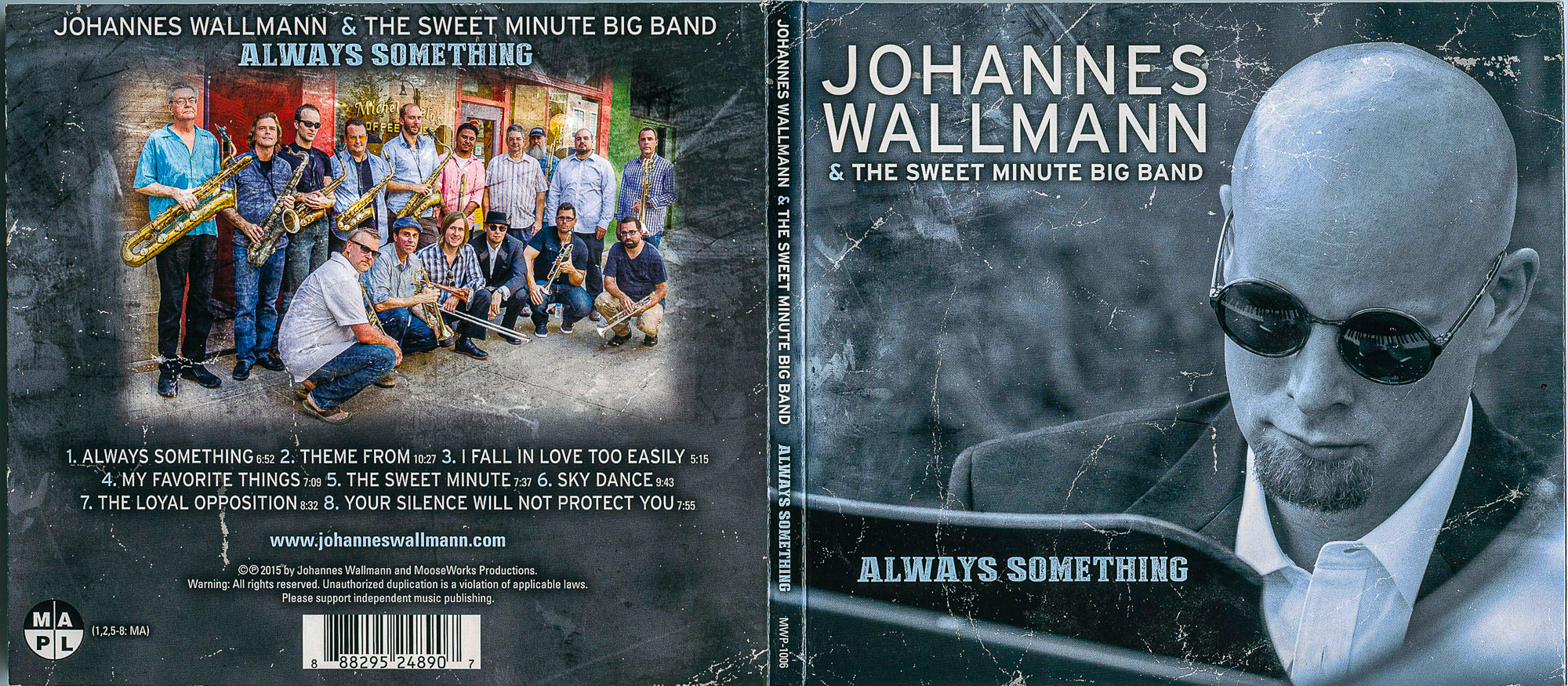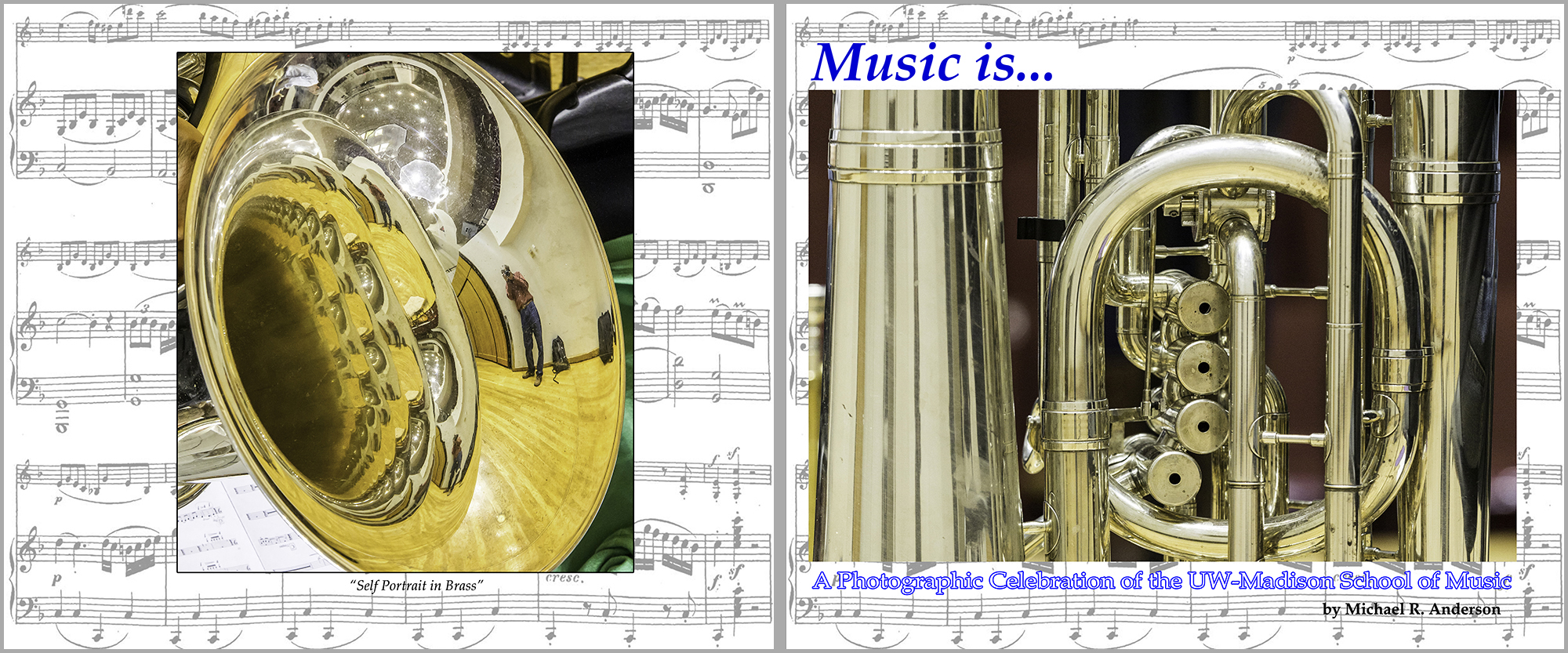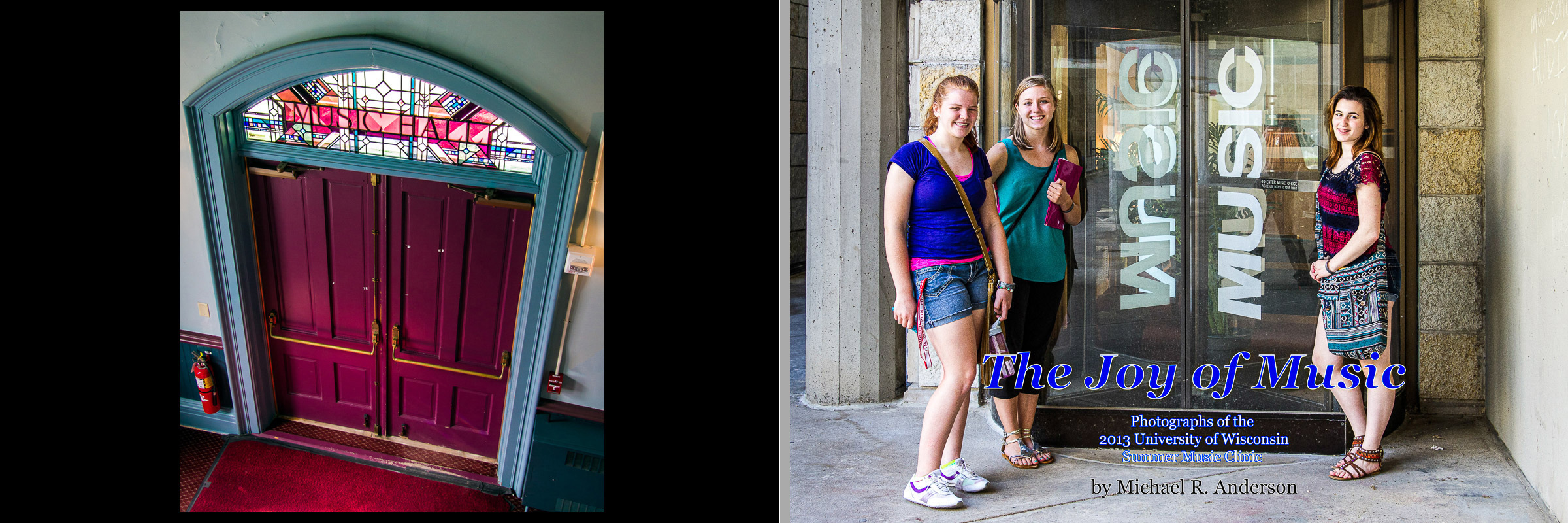
In the fall of 2012, Johannes Wallmann was hired as the first director of the UW-Madison School of Music’s new program in Jazz Studies. When I began volunteering in the spring of 2013, the program was just starting to grow so I thought I would get some photographs of his classes and concerts. In addition to photographing his classes, over the years I was kept rather busy photographing the Jazz Sextet, Jazz Octet, Jazz Big Band, Jazz Orchestra and various ensembles. He also participated with high school teachers and musicians in a Jazz Honors program where students could learn from and perform with the UW Jazz Orchestra and outside professional musicians.
Mouse over the small photos in galleries to see captions.
Click on any one to enlarge, then use arrows to scroll through the rest of the images.
As it turns out, it was good that I had taken quite a few photos of Johannes Wallmann in April 2013. I didn’t know it at the time, but an article was being written about the new UW-Madison Jazz Program for the October 2013 issue of DownBeat Magazine and they needed some photos. Johannes told the magazine to contact me and I was happy to sell them the rights to use a few of mine.

Johannes must have been satisfied with my photos because he hired me to photograph him and one of his groups, “The Sweet Minute Big Band,” at Madison’s Jazz at Five program, which takes place in the summer on State Street by the Capitol Square. Afterwards he said he’d like to have a picture of the entire group. I didn’t want it to be in front of the Capitol, that is such a commonplace background in Madison, so I took them over to the back entrance of Michelangelo’s Coffee House. It was a big group and cars parked on the street offered a bit of a challenge but I finally got a few images that I thought were OK. Later when he recorded an album with that group, he used seven photos from the concert, one for the cover and six more inside. The group photo on the street was used on the back.

If I were to say that I know very little about opera, that would be a lie. I know absolutely nothing about opera. The first opera that I photographed was Béatrice et Bénédict with Director William Farlow. He had no idea that I would be there so I made sure to introduce myself when I arrived. He was OK with my being there and did exactly what I like professors to do when I’m in their classes, he ignored me. That allowed me to work unencumbered by requests or directions. When William Farlow retired at the end of that spring semester, his position was taken by David Ronis, who asked if I would photograph his University Opera productions. He suggested I photograph their final dress rehearsal. I said yes, of course, and that started a string of eleven additional operas, including The Marriage of Figaro and Cosi fan tutte, both by Mozart, La Boheme by Puccini, and many more that I knew absolutely nothing about.
There were a couple nice things about photographing the final dress rehearsals of productions. First, they were exactly like the real shows in that the performers were in costumes and makeup and the sets were done, but there was no paying audience. Therefore, I could roam anywhere without having to worry about getting in someone’s way. Sometimes I even got up on the stage and stood off to the side to get some closer views. Second, the lighting was usually quite good. There were, of course, some “night scenes” where I might have had to increase the exposure, but generally, I was not worried about low light.
The operas were all held in Old Music Hall. To prepare for each one I usually read a synopsis on the internet. Sometimes I watched portions of videos that I found on YouTube. Once I even read the book on which the script was based. I’m not sure that such preparation really helped but at least I had some feeling for the plot. The rehearsals lasted for about 3 hours with a short intermission. I usually took about 500 photos during that time.
After the shoot I would go home and start reviewing the images. My first task was to get maybe 12 – 15 photographs, those including the main performers, to David as soon as possible. He would choose some favorites, caption them and send them out to the media. These photos, as well as those taken at other events, showed up regularly in the Wisconsin State Journal as well as in Isthmus and The Well-Tempered Ear. David Ronis has won many awards for his work, including two major awards from the American Prize National Nonprofit Competitions in the Performing Arts for his production of “Sweeney Todd” by Stephen Sondheim.
Examples of opera photos as they appeared in the newspaper.
I used many of the Music Department pictures taken in the first couple of years for an exhibit in the Lowell Center on campus from March 1 – April 30, 2015. Despite my well-known modesty, I’d like to point out that I was interviewed by The Well-Tempered Ear prior to the opening of that exhibit. Later I put together a book of the photos from the exhibit. The cover is shown below and it can be previewed in its entirely at Blurb Books.

The task on which I spent the most time by far was the annual Summer Music Clinic (SMC). During my time with the SMC I worked with three directors, Anne Aley, Beth Snodgrass and Carrie Backman. They were all nice to work with and kind enough to just let me run around and do my thing. The clinic is held for two weeks every June. The first week is for students completing 6th – 8th grades and the second week is for students completing 9th – 12th grades. The energy exuded by hundreds of happy young students playing music and running between a half-dozen buildings on campus was palpable. After chasing them around each day, I always returned home physically tired but mentally charged.
The students did much more than just play their favorite instruments, they participated in singing, dance, theater, acting and many other activities. Since my job was to document as many of these activities as possible, I ended up taking about 21,000 photos over the years. About 30% of these were submitted to the director of the SMC. The best part was, at the end of each day I would pick out about two dozen of my favorites to post on the SMC Facebook page where parents could see them. Several parents told me that they really appreciated seeing them. You can read much more about and see many additional photos of the Summer Music Clinic in Day in the Life Part 1, Day in the Life Part 2 and Day in the Life Part 3, so I won’t spend more time here.
I used many of the Summer Music Clinic pictures taken my first year for an exhibit in the UW-Madison Continuing Studies Art Gallery from August 1 – November 30, 2014. Later I put together a book of the photos from the exhibit. The cover is shown below and it can be previewed in its entirely at Blurb Books.

<– Eleven Musical Years – Part 1 || Part 3 – Eleven Musical Years –>